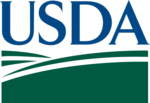Advertise Follow Us
Items Tagged with 'applications'
ARTICLES
Conservation Reserve
The conservation program comes in 3 flavors
Read More
No-Till Notes
A Post-Planting Checklist To Keep No-Till Systems On Track
Scouting fields for planter performance, weed emergence and seedling nutrient deficiencies can help no-tillers improve their management decisions for sidedress applications and beyond.
Read More






